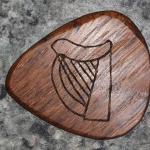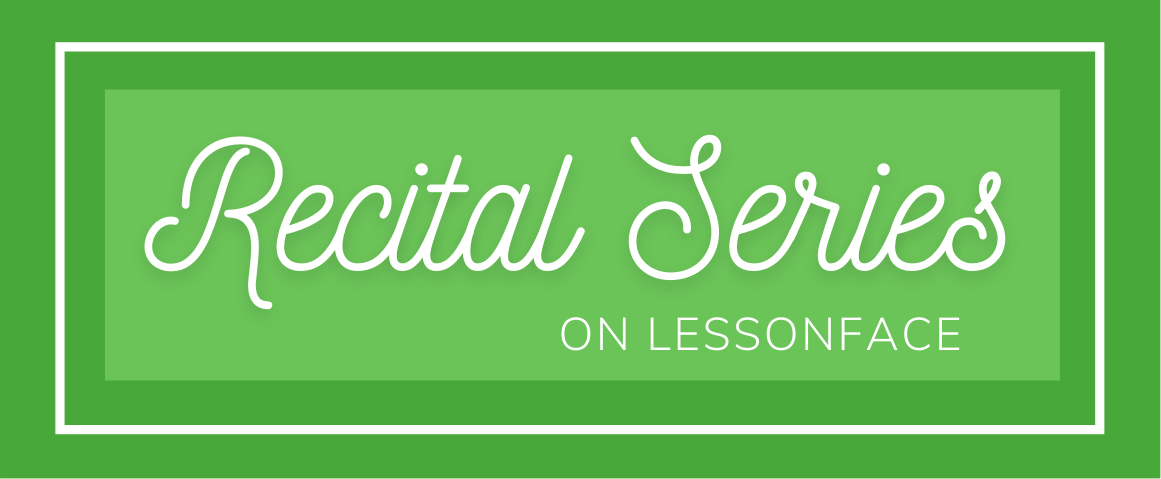Hello everyone!
I noticed there weren't any forum posts dedicated to the harp, so I thought I would humbly share my own. I took harp lessons for over a year on Lessonface and currently enjoy composing on my Celtic harp. I also like reading about the legends and history behind this ancient, storied instrument!
1. The Celtic or folk harp is different than the concert harp and does not have pedals. Most have levers to sharpen/flatten the notes instead. Folk harp players are called "harpers" instead of "harpists."
2. Antique harps had metal or gut strings. Today many are nylon. The nylon is color-coded to help identify notes. They're divided in the same way as white keys on a piano: CDE, FGAB. Some players still use metal-strung or gut-strung harps today. (Patrick Ball is a good player to look up if you want to hear the wire-strung harp.)
3. According to medieval legend, St. Bridget of Kildare (Patroness of Ireland) magically bestowed a group of noblemen with the ability to perfectly play the harp.
4. The harp was also associated with the Celtic god of light Lugh, whose August celebration of Lughnasadh is still celebrated with music today.
5. Two famous harpers born in seventeenth-century Ireland were Turlough O'Carolan and Denis Hempson. They both survived smallpox as children yet were sadly blinded by it. They were still able to masterfully play the harp, though, and this became their career. Turlough O'Carolan is credited with composing several hundred songs, such as "Planxty Burke" and "Kean O'Hara," while Denis Hempson lived to be 112 and competed into his nineties.
6. Edward Bunting was hired to write the old oral Irish harp songs down in Western notation. The result was "The Ancient Music of Ireland." It is now in the public domain and several versions are available for free download here: https://imslp.org/wiki/The_Ancient_Music_of_Ireland_(Bunting%2C_Edward)
7. Harps feature widely in poetry and story. Bards (storytellers) were supposed to produce three emotions on their instruments: sadness, laughter, and sleep. Harps are mentioned in Welsh poet Thomas Telynog Evans' "Winter and Summer" and in the fourteenth-century "Harp of Cnoc I Chosgair" by Irish Gofraidh Fionn O Dalaigh.
8. Some harpers also sing and play, like recent time's Mary O'Hara and Orla Fallon.
9. Harps are national instruments of Ireland, Wales, and Scotland. The Scottish Gaelic word for harp is "clarsach" and Welsh is "telyn."
I hope you have enjoyed my little post and thank you for taking the time to read it. Does anyone have some harp stories they would wish to share, or perhaps folklore about their own favorite instrument? All the best, Sierra





Hello Sierra,
It is good to see the Celtic harp assume it's rightful place in the forum. Thank you for posting all these fascinating facts. I love that the bards conveyed the emotion of sleep and that noblemen were granted magical abilities.
I proudly describe myself as Welsh but had no idea about all this rich history. If I discover any fiddle folk stories I promise to post!
All the best,
Fiona
Hello Fiona,
Thank you and I am glad you enjoyed my harp musings. I look forward to any fiddle stories you may find to share!
All the best, Sierra
Very interesting post Sierra. Thanks for sharing!
It's amazing to see how the harp has spread through the world and adapted to different times and cultures. Where I come from the harp is used for our most popular folklore music, called Joropo. Even though it is mostly played in trios, quartets, and quintets, the harp is definitely the most important instrument in the bandstand. Check out these examples:
Alma Llanera | A short solo performance of our most classic tune
Gavan | A great example of a traditional instrumental Joropo
Fuga con Pajarillo | Performance with a symphonic orchestra. Forward it to around 3:00 to the introduction of the harp and the roar of the crowd :)
Gavan | Interesting arrangement and stylistic variation on a Joropo tune
Hi Juan, thank you so much for sharing! I enjoyed hearing, watching, and learning about the Joropo style of music; the harpists are amazing in their speed and agility!
I enjoyed seeing their techniques, such as strumming and changing the sound of the strings by holding them near the soundboard. I find it interesting that they play with the fingernails, as that was common practice centuries ago with the Celtic harp but was not carried forward very much in modern times. It's good to see this nice technique is still alive elsewhere!
Some Celtic harp links for the interested....
Two versions of Turlough O'Carolan's "Planxty Burke" I mentioned before... an orchestral setting by the Boston Pops https://youtu.be/Tg6uKdkAXLY?feature=shared and a solo setting on wirestrung harp by Patrick Ball https://youtu.be/Uj-kkklBjcw?feature=shared.
Scottish-style lap harp, slow melody: https://youtu.be/v_H0sJljEbA?feature=shared
Larger Celtic harp with Gaelic singing and trad Irish ensemble: https://youtu.be/CAj9m_9N6gw?feature=shared
Hi Sierra! I'm glad you enjoyed it. And likewise, thank you for sharing these pieces.
I really liked Patrick Ball's solo version of "Panxty Burke". It's enchanting. It's interesting how there are different harp shapes and sizes, I didn't think of that. A lot of different colors and textures across al four videos
Can you share a photo of the harp that you're learning on? I'm interested to see what it looks like. If you can show us got it sounds liek even better
Hi JJ, thank you for your reply! I agree, Planxty Burke is one of my favorites, too, and the way Patrick Ball plays it on the wire-strung harp is quite magical.
Here is a picture of my harp, which is a nylon-strung Celtic harp with levers. The levers raise each string a half step/semitone. If a string is tuned to B flat, flipping the lever up makes it natural. If the F string, for example, is already natural, now changing the lever will make it sharp. My first teacher recommended I tune my harp to E flat Major so I can easily get a few flattened notes. I usually then raise the B, E, and A levers to make those notes natural so that I can now start in C Major, and with raising or lowering levers can play a number of key signatures.
Some lovely old Irish songs, however, use unusual key signatures so I may have to manually re-tune certain strings.
The red strings are all C's and the blue ones F's. My harp is in-between a lap harp and floor harp, and I must sit it on a container (which happens to be filled with music books!) to play. My harp was actually made twenty years ago, although I certainly haven't been playing that long!
Here also is a short clip of me playing Rory Dall O'Cahan's "Give Me Your Hand" so you can hear how my nylon-strung harp sounds.
And a link to a full version of the song on a wire harp by Patrick Ball. https://youtu.be/La73toykF6A?feature=shared
Cheers! Sierra